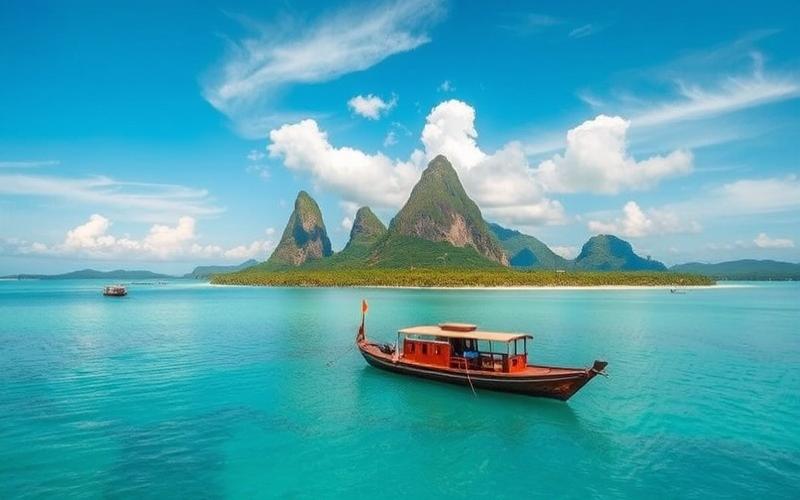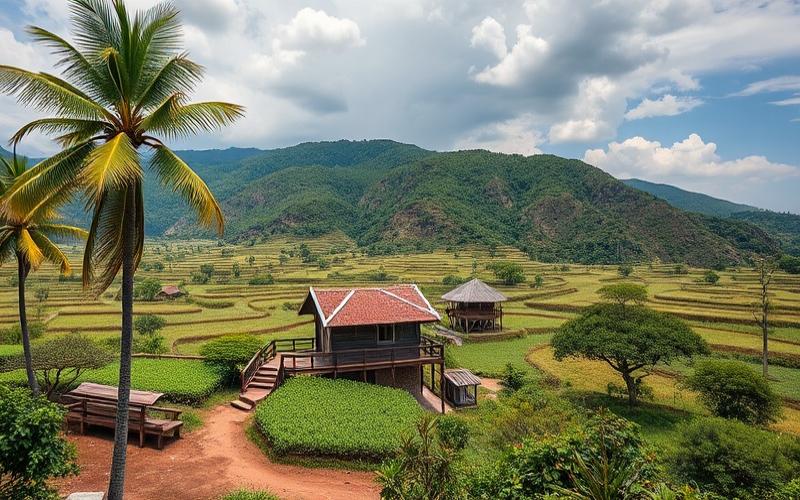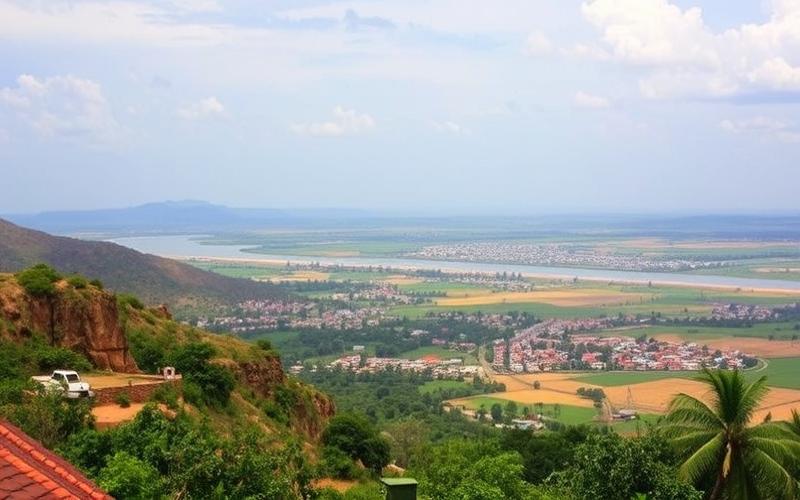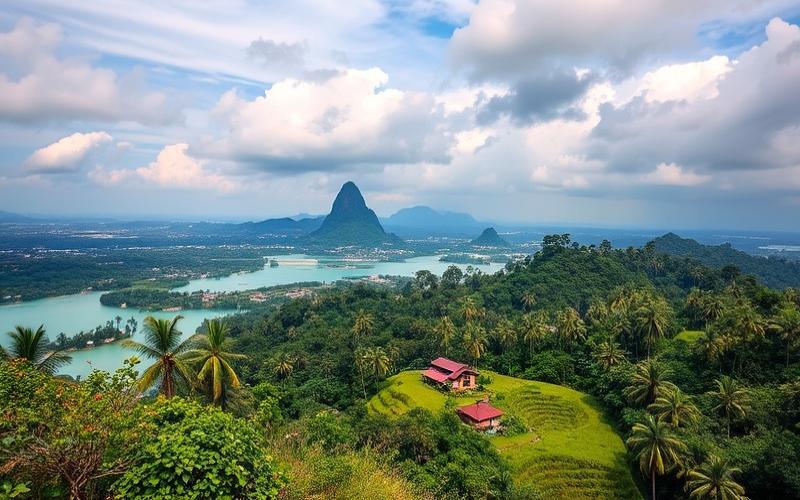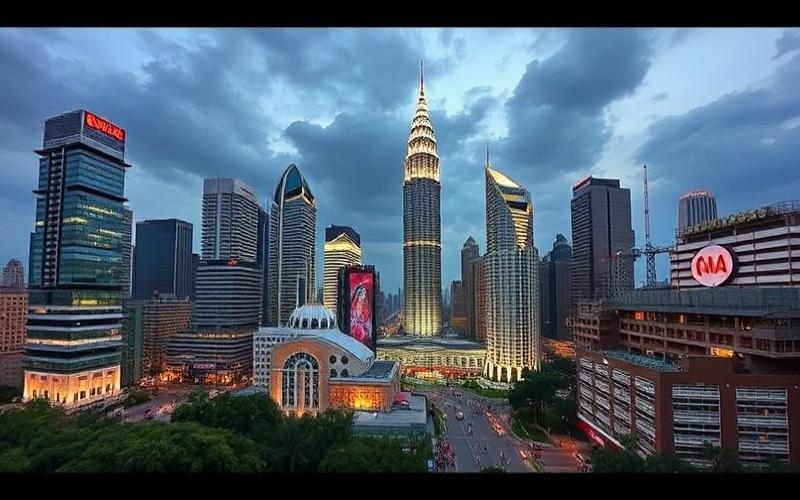
 Published on and written by Cyril Jarnias
Published on and written by Cyril Jarnias
Malaysia, a dynamic Southeast Asian nation, is experiencing vibrant urban growth. With a growing economy and a clear commitment to modernization, the country is embarking on ambitious urban development projects that promise to reshape the landscape of its major cities. These initiatives aim not only to improve residents’ quality of life but also to position Malaysia as an attractive regional hub for international investors.
Mega-Projects Shaping Malaysia’s Urban Future
Malaysia is sparing no effort in transforming its urban centers. Several large-scale projects are currently underway, demonstrating the country’s ambition in urban development.
The Tun Razak Exchange (TRX) project in Kuala Lumpur is arguably one of the most iconic. This new business district, under construction since 2012, aims to become the financial heart of the capital. Covering 28 hectares, TRX will include office skyscrapers, upscale shopping centers, luxury hotels, and exclusive residences. Scheduled for completion in 2027, the project is expected to create over 500,000 jobs and attract massive investments in the financial sector.
Bandar Malaysia, another flagship project, is being developed on the site of the former Sungai Besi military airport south of Kuala Lumpur. This massive project, covering 196 hectares, aims to create a smart and sustainable city integrating residential, commercial, and leisure spaces. Bandar Malaysia will also serve as the terminus for the high-speed rail line connecting Kuala Lumpur to Singapore, thereby enhancing regional connectivity.
In Johor Bahru, the border city with Singapore, the Forest City project is generating significant attention. This artificial city, built on four man-made islands, is designed to accommodate up to 700,000 residents. Blending residential, commercial, and leisure areas, the project focuses on a green and smart city concept to attract investors and residents, particularly from nearby Singapore.
These mega-projects are just the tip of the iceberg. Throughout the country, smaller yet equally important initiatives are in progress. In Penang, the integrated public transport project aims to improve urban mobility with the construction of light rail and monorail lines. In Kota Kinabalu, in East Malaysia, waterfront development is transforming the city into a premier tourist destination.
Good to Know:
These large-scale urban projects reflect Malaysia’s ambition to position itself as a major player in Southeast Asian urban development. They offer a fascinating glimpse into what the future city might look like in this region of the world.
A Real Estate Market in Transformation
The impact of these urban development projects on Malaysia’s real estate market is substantial. We are witnessing a genuine transformation of the real estate landscape, with repercussions on prices, demand, and the types of properties sought.
In areas affected by these major projects, real estate prices have seen significant increases. In Kuala Lumpur, for example, properties near TRX have seen their values rise by 20 to 30% since the project’s launch. This trend is expected to continue as projects advance and infrastructure develops.
Demand for modern and sustainable housing is growing rapidly. Real estate developers are adapting their offerings accordingly, proposing apartments and houses incorporating the latest energy-saving and connectivity technologies. “Smart home” and “green building” concepts are increasingly sought after by Malaysian and foreign buyers.
The luxury real estate market is experiencing particular growth. Projects like Forest City or certain parts of TRX target high-end clients, both local and international. These developments offer international-standard services and amenities, attracting a new category of wealthy investors and residents.
The commercial real estate sector is also expanding rapidly. The creation of new business districts and commercial areas is stimulating demand for modern office spaces and innovative retail spaces. This trend is particularly visible in Kuala Lumpur and major secondary cities like Penang and Johor Bahru.
However, this rapid evolution of the real estate market is not without concerns. Some observers fear an oversupply, particularly in the luxury segment, which could lead to a real estate bubble. Malaysian authorities are aware of this risk and are implementing measures to regulate the market and prevent overheating.
Additionally, the issue of housing affordability for middle and lower-income classes remains a major challenge. Faced with rising prices in urban areas, the Malaysian government is encouraging the development of affordable housing and implementing homeownership assistance programs.
Good to Know:
The Malaysian real estate market currently offers an interesting mix of opportunities and challenges. While major urban projects stimulate growth and innovation in the sector, it is important to remain attentive to potential risks and equity issues in housing access.
A Promised Land for Savvy Investors
Urban development projects in Malaysia are paving the way for numerous opportunities for investors, both local and international. The country is positioning itself as an attractive destination for real estate investment, offering interesting return potential in a relatively stable economic and political context.
High-end residential real estate represents a particularly interesting opportunity. Projects like Forest City in Johor Bahru or certain parts of TRX in Kuala Lumpur offer luxury properties at prices that remain competitive compared to other major Asian cities like Singapore or Hong Kong. These investments can generate attractive rental yields, especially from expatriate or international professional clients.
The commercial real estate sector also offers promising prospects. With the development of new business districts and Malaysia’s ambition to become a regional financial hub, demand for modern, well-located office spaces should remain strong. Investors can consider acquiring commercial spaces in strategic areas, anticipating future growth.
Infrastructure projects related to urban development create indirect opportunities for investors. The improvement of public transport, for example, can significantly increase the value of properties near new metro or train lines. Savvy investors can therefore seek to acquire properties in areas promised better connectivity in the coming years.
The tourism and hospitality sector also offers interesting prospects. With the development of new urban complexes and improved infrastructure, Malaysia is strengthening its tourist appeal. Investors can consider placements in hotels, tourist residences, or properties intended for short-term rentals.
Malaysian real estate investment trusts (REITs) provide an option for investors who wish to gain exposure to the local real estate market without directly acquiring properties. These listed funds offer interesting diversification and liquidity, while allowing investors to benefit from the growth of the Malaysian real estate sector.
It is important to note that, despite these attractive opportunities, real estate investment in Malaysia also carries risks. Foreign investors must be particularly attentive to local regulations, which may impose restrictions on the acquisition of certain types of properties. Moreover, as in any emerging market, it is crucial to understand local dynamics well and to seek professional advice.
Malaysia’s political and economic stability, combined with its strategic position in Southeast Asia, nevertheless makes it a particularly interesting investment destination for those looking to diversify their real estate portfolio internationally.
Good to Know:
Malaysia offers a conducive environment for real estate investment, with significant growth potential linked to major urban development projects. However, as with any foreign investment, it is essential to research thoroughly and proceed with caution to maximize chances of success.
Conclusion: A Promising Urban Future
Urban development projects in Malaysia reflect the country’s ambition to position itself as a major player in urban modernity in Southeast Asia. These initiatives are not only transforming the physical landscape of Malaysian cities but also redefining urban living standards and economic opportunities in the country.
For investors, these developments offer a range of attractive opportunities, whether in residential, commercial real estate, or related sectors like tourism and infrastructure. Malaysia presents itself as an attractive investment destination, combining growth potential, relative stability, and strategic positioning in Asia.
However, like any rapidly evolving market, the Malaysian real estate sector requires a cautious and well-informed approach. Potential investors must remain attentive to local market dynamics, current regulations, and potential risks.
Overall, Malaysia’s urban future looks promising. Current and upcoming projects promise to transform the country into a modern and dynamic regional hub, offering exciting opportunities for both residents and international investors.
Good to Know:
Malaysia’s urban transformation is a fascinating process to follow, offering a unique insight into the evolution of Asian cities in the 21st century. For those interested in international real estate, the Malaysian market certainly deserves particular attention in the coming years.
Disclaimer: The information provided on this website is for informational purposes only and does not constitute financial, legal, or professional advice. We encourage you to consult qualified experts before making any investment, real estate, or expatriation decisions. Although we strive to maintain up-to-date and accurate information, we do not guarantee the completeness, accuracy, or timeliness of the proposed content. As investment and expatriation involve risks, we disclaim any liability for potential losses or damages arising from the use of this site. Your use of this site confirms your acceptance of these terms and your understanding of the associated risks.

